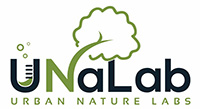 |
Inspiration Card
Governance Actions |
|
Policies
|

|
G12 Introducing NBS-supportive building regulations
| Knowledge & Awarness | Political Commitment | Organisation | Perceived Costs & Benefits | Social & Environmental Justice |
| ✔ | ✔ |
Building codes are important instruments to steer urban development in a desired direction. These define and prescribe specific standards for constructed objects which development projects have to be conform in order to obtain building permission. Here NBS should be more explicitly incorporated.
- NBS-specific regulations, e.g. new buildings with suitable roofs have to be equipped with a green roof
- Target-oriented regulations, e.g. green space minimums for specific areas
- Preserving regulations, e.g. mandatory prefeasibility studies and respective water management plans, which demonstrate that the water retention capacity of the area is not negatively influenced by the proposed activities.
Example: Policy measures for green roofs, Basel
An example for a successful integrated approach of NBS-supportive policy measures in the building area is the case of Basel: With a key motivation for the expansion of green roofs, which is to reduce the energy consumption of buildings and to protect biodiversity, the city uses a model to encourage the installation of green roofs that combines four funding streams and policies:
- Energy saving fund incentives, which provide subsidies for the installation of green roofs
- Allocation of research grants to gain knowledge on biodiversity protection benefits from green roofs. The results were consequently used to shape green roof regulations in Basel.
- Building regulation as amendment in the paragraph 72 to the Building and Construction Law, which establishes that all new and renovated flat roofs must be greened and also stipulates associated design guidelines.
- A contest to award the “best looking green roofs” as an incentive programme.
Thanks to these regulations and incentives, Basel enjoys one of the highest green roofs per capita ratios in the world (Kazmierczak and Carter 2010a).
UNaLab Stories: River basin management plans, Genova
In 2001, the Liguria Region (Department of the Territory, Environment, Infrastructure and Transport) developed detailed river basin management plans which show individual features, associated risks, and future predictions, and carried out interventions in the area of soil and water management (see example Figure 8). Focus lies on hydraulic risk management in terms of flood and landslide prevention. They are used as urban planning instruments and are linked to technical implementation rules for the respective zones. Both municipal plans and proposed building interventions have to comply with these guidelines and be approved by the region. Furthermore, the Liguria Region also manages a budget of approximately 2 million Euros each year to spend on water management measures. Cities can apply for financing for their interventions if they conform to the river basin management plans and contain a maintenance plan. Larger risk mitigation interventions are being assessed and financed on the national level.
In terms of NBS, the river basin management plans state that “to maintain the natural characteristics of the territory, natural techniques such as renaturing and environmental engineering measures should be preferred whenever possible” (Provincia di Genova, 2014). Furthermore, each proposed intervention has to prove or introduce mitigation measures that soil permeability will not be negatively influenced as compared to the prior state.
